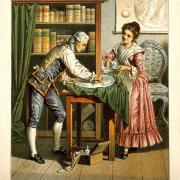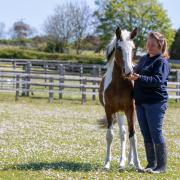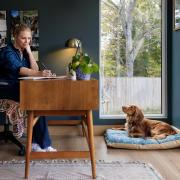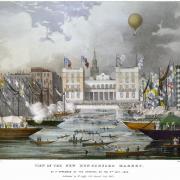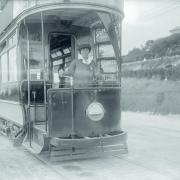Shepton Mallet’s most famous son was born nearly 200 years ago - but as the founder of perhaps the UK's most famous department store chain, his name is still known across the world today
Born in February 1836 and to become a town councillor and philosopher the man who became famous worldwide was called John Lewis.
Orphaned by the age of eight, Lewis was raised by an aunt, Christian Speed, going on to serve an apprenticeship with a Wells draper before heading to London to operate as a silk buyer, the youngest in the capital. Aged 20 he was working at Oxford Circus in the department store of Peter Robinson, founded in 1833 a couple of years before Lewis’ birth.
It was in 1864 that Lewis founded his eponymous store as a small drapery shop, John Lewis & Co. based at 132 Oxford Street on part of the same site occupied by today’s department store. His first day’s takings were a modest 16s 4d, or about £75 in today’s money.
The eventual success of the fledgling business saw it expanded and restructured in the 1880s into a ‘department store’, one noted for honesty, service and value. The significance of this moment should not be underestimated. Without the founder’s opening of that first store there’d have been no department store division, no John Spedan Lewis innovation (read on) and finally no John Lewis Partnership, the co-owned business of today.
Further expansion followed in 1905 when Lewis bought ‘Peter Jones’, reputedly for £20,000 cash which he’d nonchalantly taken from Oxford Street to Sloane Square, the home of the rival department store. He had twenty £1,000 notes stuffed in his pocket; the deal was done on the spot.
Not everything went so smoothly and Lewis, whose management style has been described as ‘autocratic’, fell out with the ground landlord of his Oxford Street premises, arguing vehemently about what he could and couldn’t do with his store, and ending up incarcerated in Brixton for three weeks in 1903 for contempt of court. It was a spat that rumbled on for over 20 years with another flashpoint in 1911 when Lewis was sued for libel.
The founder’s attitude and approach to the store were Victorian with the workforce kept in its place (hours long, conditions poor) and a dictatorial management style leading to the odd dismissal, his short temper being notorious. In a way, however, John Lewis’ trenchant methods led to change as his son (read on) saw a more enlightened future; innovation that eventually led to the John Lewis Partnership.
Lewis’ political views seemed at variance with his management style as he was a supporter of the Liberals plus a longstanding local councillor. In 1884 he married Eliza Baker, a schoolmistress who also hailed from a family of West Country drapers. She was a student of Girton College, Cambridge, so clearly talented.
The couple had two children, John Spedan Lewis (born 1885) and Oswald Lewis (born 1887), both groomed for the business. John and son John Spedan quarreled, leading to the latter taking over at Peter Jones in 1916 as the two men couldn’t cooperate. By the 1920s they were effectively ignoring one another and this was when the business was struggling after World War One, with the 18-month depression of January 1920 to July 1921.
The founder’s dominating style came into focus on April 27, 1920, when 400 department store staff opted for strike action ‘en masse’, timed to coincide with a major John Lewis sale. They demanded trade union representation to achieve fairer treatment on pay and working conditions. Lewis reacted typically by immediately sacking the strikers who attracted widespread sympathy, including a donation from the royal family via Queen Mary, George V’s consort.
The staff wanted ‘free association’. The right to freedom of association with others, including the right to form and join trade unions was largely accepted by 1920 but not by the gaffer running John Lewis. Lewis was not for budging so those former staff members had to seek alternative employment. Lewis’ attitude was trenchant and unflinching: ‘If I see them on their knees, I shall not take them back!’
It was John Spedan who conceived the idea of a business as a partnership of all its workers, a concept that would have been anathema to his pa although the two men were partly reconciled after Eliza intervened.
Founder John Lewis remained in control of the Oxford Street store until he died in June 1928, aged 92, having never fully retired. His passing enabled John Spedan to implement his ideas of Partnership, which first arose in 1929, enabling the staff to benefit from business profits.
The 1930s saw further innovation and expansion: There was a new electrical department (vacuums and gramophones) yet silks and dress fabrics remained the top sellers, the John Lewis Silk Room a hive of activity in the 1930s; there was free health care for the staff and this prior to the NHS; the partnership expanded outside London, one of the stores it acquired being Lance and Lance in Weston-super-Mare in 1933.
There would be further seismic events after the founder’s death, one that would have made him wince and one to make him proud. The former was the tragic bombing of the Oxford Street store in September 1940 which left it in tatters; the latter was the acquisition of the Selfridge Provincial Stores group in the same year. Always keen to get one over on the opposition, John Lewis Snr. would have been as ecstatic about nicking some of the Selfridge empire as he no doubt was about his ‘cash buyer’ purchase of Peter Jones 35 years before.
The firm a Shepton Mallet boy created in mid-Victorian times now has around 80,000 partners/employees (2020) and is the UK’s third-largest non-traded company by sales (2016).
A timeline
1836 – John Lewis born in Shepton Mallet (24th February).
1864 – John Lewis founds his eponymous store at 132 Oxford Street.
1884 – Marries Eliza Baker, a schoolmistress and student of Girton College, Cambridge.
1903 – Founder John Lewis spends three weeks in Brixton for contempt of court.
1905 – Lewis walks into Peter Jones with £20,000 in cash to buy the store.
1911 – The ongoing spat with the Oxford Street ground landlord sees Lewis sued for libel.
1920 – The John Lewis strike when 400 staff walk out over pay and conditions.
1928 – Death of founder John Lewis on 8th June aged 92.
1933 – Acquisition of Lance and Lance department store in Weston-super-Mare.
1940 – Selfridge Provincial Stores acquired in the same year that Oxford Street is bombed.










